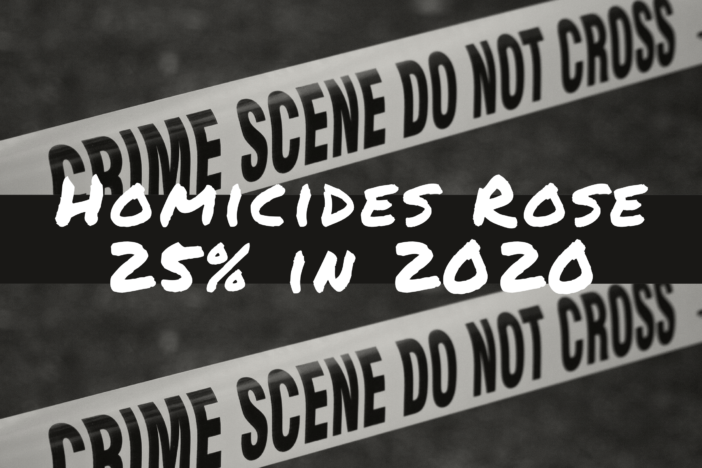Stories about the sharp rise in violent crime seem to be on every news broadcast and posted across social media every day.
Big cities seem to draw a lot of the attention, especially when it comes to murders. But when you look at the data, the trend is national and, quite frankly, a bit of mystery at this point. You see it’s complicated and simple answers don’t really address all the moving parts.
That doesn’t mean that pundits, politicians and keyboard commentators haven’t all provided a continuous stream of expert analysis.
Sure, it could be “depolicing”. Low morale amongst police officers results in lower productivity, which means more bad guys out and about.
The rise could also be a byproduct of pandemic restrictions and their impact on social behavior. There are definitely a lot of angry people out there.
Or maybe it’s the release of tens of thousands of prisoners who would otherwise have been incarcerated and, therefore, less likely to commit crimes. In my experience, every small-time crook is only one bad decision away from being a big time felon.
In the 1990s, most people would agree that homicides were at record levels in just about every city in the country. At the time, experts, pundits, and even scholars were talking about the “coming crime wave” and the rise of the “super predators.” But those predictions never came to fruition. In fact, crime fell at record rates to the point that by the end of the decade most cities were reporting record low levels of crime.

Responding to a year to date increase in violent crime and homicides, Santa Ana Police Chief David Valentin talks about the department’s response with Operation Community First.
Photo by Steven Georges/Behind the Badge
I point this out because two decades later there is still no clear consensus of what happened to cause the upsurge in murder or what exactly caused the crime rate to drop so rapidly.
Murder rates are a fickle thing and defy even the most vigorous scrutiny. In some cities, even as the murder rates have gone up other crime has gone down. Go figure?
Historic percentage increases in homicides in cities such as Portland, Oregon; Salt Lake City, Utah; and Rochester, New York are indicative the trend today is not just in urban areas like Chicago and Los Angeles. Everyone loves to point out how bad it is in Chicago, but homicides seem to be happening in towns and cities across the country.
I would add that for every person who is murdered there at that many more who were shot at and wounded or simply by luck or circumstance didn’t get hit.
Drive-by shootings in recent days at Knott’s Berry Farm Amusement Park in California and another during a Washington Nationals baseball game give you the feeling you aren’t safe anywhere.
What we do know is gang activity drives a lot of the murder rate in this country. Involvement in illegal drug sales is another factor. We also know that in a large percentage of homicides the victim and suspects are known to each other — especially in domestic and workplace situations.
Police departments are under a lot of pressure to do something and to do it now.
But what can they do?
Well, if the homicide rates are mostly gang related and geographically identifiable, then police can do saturation patrol and enforcement. Those tactics require a lot of cops, proactive enforcement, and compliance checks on known gang members on probation and parole. The results are hit and miss and usually target gang members most likely to be violent.
Then there is the issue of who actually stays in jail, which the departments have no control over.
But what about the more than 50 percent of homicides where the victim and suspect are already known to each other? These cases are usually a result of domestic and workplace violence. Increasing the cops on the street doesn’t really address these situations.
A proactive response can be helpful when potential threats are assessed by responding officers before things get out of control. In domestic violence situations this means getting people into the system for help or, more importantly, protection from abusers.
While police by themselves do not have the ability to change the social and economic conditions that can lead to violence, they can serve as the community harbingers; that is, directing those with the resources toward where those resources are needed most.
Don’t forget, homicides are amongst the most tedious and resource-demanding investigations a police department can undertake. In cities where these crimes are skyrocketing, personnel, time and resources are needed to respond, process, and investigate each and every one of these cases. At a time when critics want to defund the police the public needs to realize that police departments do more than just patrol the streets.
 Behind the Badge
Behind the Badge



